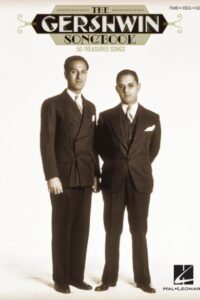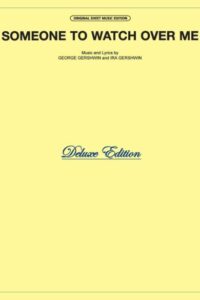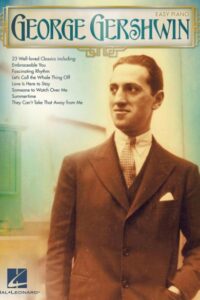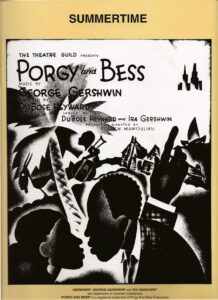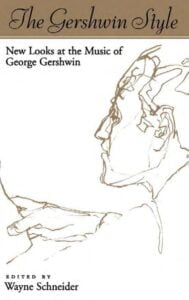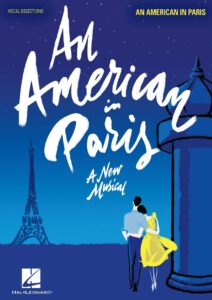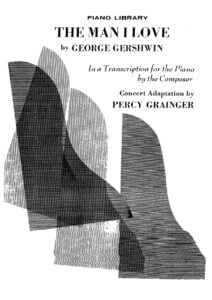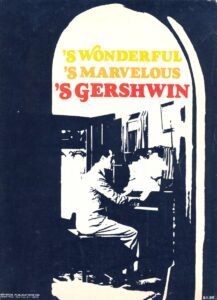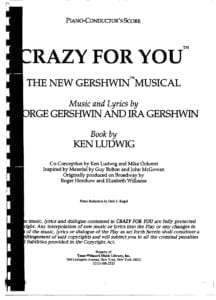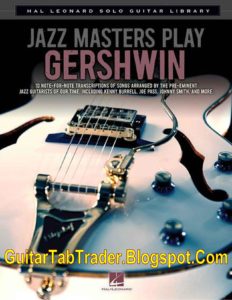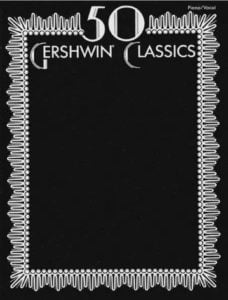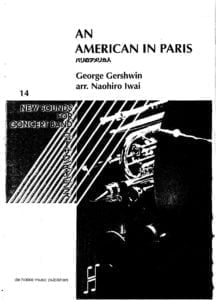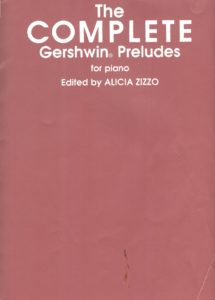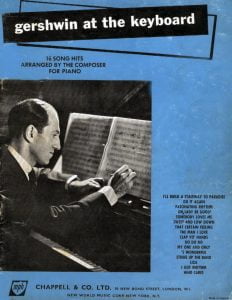
Come join us now, and enjoy playing your beloved music and browse through great scores of every level and styles!
Can’t find the songbook you’re looking for? Please, email us at: sheetmusiclibrarypdf@gmail.com We’d like to help you!
Table of Contents
Celebrating George Gershwin’s birthday (on this day in 1898)
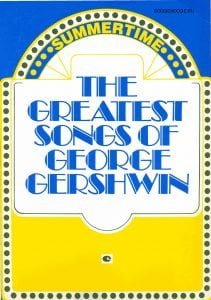
Gershwin plays I Got Rhythm (1931, 3 camera views)
George Gershwin plays I Got Rhythm at the opening of New York’s Manhattan Theatre on 5 August 1931, his performance filmed from three different camera angles.
Best Sheet Music download from our Library.

Please, subscribe to our Library.
If you are already a subscriber, please, check our NEW SCORES’ page every month for new sheet music. THANK YOU!
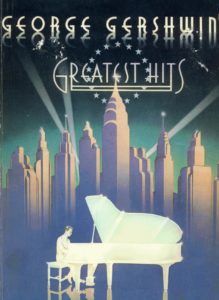
George Gershwin — an exhaustive portrait
George Gershwin (born Jacob Gershwine; September 26, 1898 – July 11, 1937) is one of the central figures in 20th-century American music: a composer and pianist who moved freely between Tin Pan Alley, Broadway, jazz, Hollywood and the concert hall, and who helped forge a distinctively American sound by fusing popular song, blues and jazz elements with European-influenced concert forms. What follows is a comprehensive look at his life, style, improvisational approach, collaborations, harmonic language, major works, legacy and recordings. (Key biographical facts: birth and death). (Encyclopedia Britannica)
Short biography — life and career in outline
George Gershwin was born Jacob Gershwine in Brooklyn, New York, on September 26, 1898, the second son of Russian-Jewish immigrants. Early on he showed musical appetite more than formal training: he left school as a teenager and took a job as a “song plugger” on Tin Pan Alley, playing and promoting new songs in the publishing houses that then dominated American popular music. That job exposed him to the mechanics of popular songwriting and to the jazz and theater sounds of New York, and it launched his career as a writer of songs and musical comedies. (Viquipèdia)
In the 1920s Gershwin achieved popular success with catchy hits (for example his early piece “Swanee,” popularized by Al Jolson) and with memorable Broadway shows such as Lady, Be Good! (which introduced “Fascinating Rhythm”) and Oh, Kay! He quickly moved beyond Tin Pan Alley’s thirty-two-bar tunes into larger forms; the turning point was Rhapsody in Blue (1924), a hybrid work for piano and jazz orchestra that announced a new possibility for American concert music by combining jazz inflection and syncopation with the sweep and scale of concert rhapsody. The premiere — at Paul Whiteman’s “Experiment in Modern Music” concert — made Gershwin a national figure. (Viquipèdia)
Through the late 1920s and early 1930s Gershwin continued to compose both popular songs (many in collaboration with his brother Ira) and serious concert works such as the Concerto in F (1925) and An American in Paris (1928). His ambition culminated in the “folk opera” Porgy and Bess (1935), a large-scale stage work in which he drew on African-American musical idioms to create music that aimed to be operatic and vernacular at once. Gershwin also spent time in Hollywood composing for films and writing songs for movie musicals. In July 1937 he died suddenly, at age 38, after complications from a brain tumor — cutting short a dazzling, experimental career. (Viquipèdia)

Musical style — the big picture
Gershwin’s musical personality is paradoxically simple to describe and hard to pin down:
• American vernacular at its heart. His melodic shapes, rhythms and inflections come from jazz, blues, ragtime and Tin Pan Alley — the urban American soundscape of jazz clubs, Broadway, and black American musical traditions. Yet he often set those elements inside orchestral textures and formal shapes drawn from European practice. (Viquipèdia)
• Polished melodic writing. Gershwin had a knack for memorable, singable tunes that could be casual or deeply affecting — from the cheeky syncopation of “Fascinating Rhythm” to the lullaby sweep of “Summertime.”
• Rhythmic vitality. Syncopation, off-beat accents and the propulsion of dance rhythms (Charleston, foxtrot, stride piano patterns) animate much of his work.
• Hybridity of genres. Rather than being constrained by “serious” vs “popular,” he grafted vernacular elements (blue notes, flattened sevenths, jazz harmonies) onto concert structures (rhapsody, concerto, symphonic poem, opera).
• Color and orchestration. Although Gershwin sometimes relied on arrangers (most famously Ferde Grofé’s orchestrations of Rhapsody in Blue), he was deeply attuned to orchestral color and to the ways jazz band sonorities could be blended into symphonic writing. (Viquipèdia)
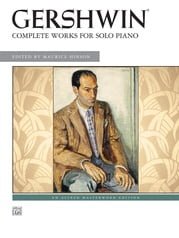
Improvisation and Gershwin at the keyboard
Gershwin was a virtuosic pianist and an improviser in the jazz tradition. His early career as a popular pianist and accompanist trained him in ragtime and stride styles, and those techniques appear in his own playing and in several of his piano-centric compositions. Several points about his improvisatory approach:
• Stride and ragtime roots. Gershwin used left-hand stride patterns (oom-pah alternating bass and chords) and syncopated right-hand figuration drawn from ragtime and early jazz pianists. These underpin many accompaniment patterns in his songs and show up in solo piano pieces. (Gershwin)
• Melodic spontaneity. In performance he often ornamented and extended his composed melodies; surviving recordings and accounts describe Gershwin riffing around his themes, stretching rhythms and adding bluesy turns.
• Rhythmic looseness. Gershwin’s improvisations were not metronomic: he used rubato, push-and-pull, and swung rhythms to achieve an idiomatic jazz feeling even when the underlying harmony was classical.
• Integration with orchestral contexts. When soloing with orchestras (as at the first performance of Rhapsody in Blue), his pianism was both concert-minded and jazzy: structured, virtuosic passages alternated with jazz inflections and bluesy clusters.
Because much of his improvisation was ephemeral, we rely on contemporary reports, piano rolls, recordings and the improvisatory character of pieces he composed — the way he notated “cadenzas” that sound improvised — to reconstruct his style. (Viquipèdia)

Harmony, chord progressions and technical hallmarks
Gershwin’s harmonic language lives in the intersection of popular/jazz practice and late-Romantic chromaticism. Below are structural and harmonic features that characterize his writing; where useful I give musical examples in plain descriptive form rather than full notation.
1. Jazz-informed extended harmony. Gershwin used dominant-seventh, ninth, thirteenth and added-tone sonorities freely — often colored by blue notes (flattened third, sixth, or seventh). In other words, chords that in classical practice might be “dissonant” were treated as color in a jazz sense. (Viquipèdia)
2. “Rhythm changes” and the song-form legacy. The chord sequence of “I Got Rhythm” became a foundational progression for jazz improvisation (the so-called “Rhythm changes”): a compact AABA form with progressions that loop through circle-of-fifths motion and common popular-song substitutes. Many jazz tunes and improvisations are based on these changes. (If you study jazz standards, you’ll encounter Gershwin’s progressions everywhere.) (Viquipèdia)
3. Blues inflection and modal mixture. He frequently moved between major and minor colors (modal mixture) within a single phrase, and he used pentatonic and blues scales for melodic material. These modal shifts give tunes like “Summertime” their lullaby-but-blues character.
4. Chromatic mediant relationships and colorful shifts. In some larger works Gershwin uses chromatic mediant moves (shifts by a third to distantly related keys) for color and dramatic effect — a hallmark in 20th-century harmony that he shares with contemporaries in both jazz and art music.
5. Ostinato and pedal textures. He often anchors a section with repeating rhythmic or harmonic figures — think of the ostinato figures that drive sections of Rhapsody in Blue — layered with syncopated melodies.
6. Concerto and symphonic procedures adapted to jazz materials. In works like the Concerto in F and An American in Paris, formal devices from the concerto and symphonic poem (recapitulation, development, orchestral tutti) are adapted to riffs and jazz-derived harmonic materials.
If you’re a musician wanting concrete analysis, the “Rhythm changes” (from “I Got Rhythm”) and the opening clarinet-gliss and piano figuration of Rhapsody are two canonical study points: one for popular song form and jazz substitutions, the other for orchestration and hybrid genre writing. (Viquipèdia)
Collaborations and important figures in his career
• Ira Gershwin — George’s older brother and primary lyricist. Their composer-lyricist team produced many of the Great American Songbook standards: “Embraceable You,” “Someone to Watch Over Me,” “They Can’t Take That Away from Me,” and innumerable Broadway numbers. The brothers’ partnership combined George’s melodic instincts with Ira’s clever, urbane lyrics. (Viquipèdia)
• Paul Whiteman — Bandleader who commissioned Rhapsody in Blue and presented its premiere in 1924; his concert series promoted the idea of “symphonic jazz.” The premiere (and Whiteman’s championing) accelerated Gershwin’s fame. (Viquipèdia)
• Ferde Grofé — arranger and orchestrator who prepared the original band scoring of Rhapsody in Blue (and later re-orchestrated it for different ensembles). Grofé’s orchestrations helped translate Gershwin’s piano textures into orchestral color. (Viquipèdia)
• DuBose Heyward — author of the novel Porgy and co-librettist/lyricist for Porgy and Bess, whose collaboration with Gershwin resulted in one of the 20th century’s most discussed American stage works.
• Performers and later interpreters. Gershwin’s music has been championed and recorded by an enormous roster of artists: from classical conductors who programmed Rhapsody in Blue and An American in Paris to jazz musicians who turned “I Got Rhythm” into a harmonic template. His music’s cross-genre appeal has created a long tradition of reinterpretation.
Major works (selected, with dates and notes)
This is a selective list of Gershwin’s most significant compositions across genres.
Orchestral / Concert works
- Rhapsody in Blue (1924) — piano and jazz band/orchestra; the signature “fusion” piece that made Gershwin internationally famous. Premiere: Aeolian Hall, New York (Paul Whiteman concert). (Viquipèdia)
- Concerto in F (1925) — a three-movement concerto blending jazz textures and classical concerto gestures. (Viquipèdia)
- An American in Paris (1928) — tone poem for orchestra inspired by Gershwin’s time in Paris; evokes urban street life with taxi horns and jazz rhythms. (Viquipèdia)
Opera / Stage
- Porgy and Bess (1935) — staged “folk opera” on a libretto by DuBose Heyward (and Ira Gershwin), featuring “Summertime,” “It Ain’t Necessarily So,” and other songs that became standards; controversial in reception for questions of representation but hugely influential musically and theatrically. (Viquipèdia)
Broadway / Popular songs (many co-written with Ira)
- “I Got Rhythm” (from Girl Crazy, 1930) — spawned “Rhythm changes.” (Viquipèdia)
- “Fascinating Rhythm” (from Lady, Be Good!, 1924). (Gershwin)
- “Summertime” (from Porgy and Bess, 1935) — one of the most covered songs in popular music. (Viquipèdia)
- “Embraceable You,” “Someone to Watch Over Me,” “They Can’t Take That Away From Me,” “Nice Work If You Can Get It,” and many other standards.
Film music and Hollywood work
Gershwin wrote for motion pictures and supplied songs to film musicals; he also spent time in Hollywood in the 1930s composing and consulting for films and musical productions. (See filmography/recordings section below for specifics). (Encyclopedia Britannica)
Filmography and recordings
Gershwin’s creative activities extended into film: he wrote songs that were used in movies, and some of his stage works were adapted to film later. During the 1930s he worked in Hollywood, contributing songs and scores to various picture projects; several film musicals of the era featured his songs and arrangements. After his death his music has been used widely in film soundtracks, documentaries and biopics — Porgy and Bess was adapted for the screen (1959) and Rhapsody in Blue has appeared in countless film and television scores.
As for recordings, Gershwin performed on piano in some early recordings and piano rolls, and his works have an enormous recorded legacy: studio recordings by Paul Whiteman and others, innumerable jazz takes on his songs, classical recordings of his concert works (often in Grofé’s orchestration), and later crossover albums that place Gershwin’s music in jazz, pop and classical contexts. Because new historical editions and boxed sets continue to appear, consult a discography source for the most complete, current list; Gershwin’s catalogue is extensively documented in archives and on specialist sites. (Viquipèdia)
Influences and whom he influenced
Who influenced Gershwin?
- Jazz, blues and ragtime (stride pianists, New York dance-hall culture) formed the vernacular basis of his musical language.
- European composers and techniques. Gershwin admired late Romantics and Impressionists (Ravel was a composer he admired intensely; Gershwin even sought lessons with him — Ravel reportedly declined to teach privately). The contour and orchestral thinking in works like An American in Paris show a European awareness. (Viquipèdia)
Whom Gershwin influenced?
- The list is vast: jazz musicians adopted his harmonic progressions and tunes (the “Rhythm changes” in particular became a backbone of jazz improvisation). Composers of symphonic jazz, Broadway composers, Hollywood film composers and later popular and classical musicians all drew on his synthesis of styles. Generations of pianists have studied his piano writing; orchestras have included his concert works in their repertory. (Viquipèdia)
Legacy, controversies and the open questions
Gershwin’s legacy is enormous and also contested in places. Musically, he helped break down the barrier between popular and serious music, showing that songs and jazz could inform concert-grade compositions. Rhapsody in Blue is often cited as a defining piece of the Jazz Age and as an American musical milestone. Porgy and Bess created some of the most enduring songs of the American stage and attempted (controversially) to present African-American life in operatic form; the opera’s casting and pictorial choices have generated extensive debate about representation and authorship. (Viquipèdia)
There are also legal and copyright legacies: Gershwin’s estate has been active in protecting and exploiting rights; his music’s continued popularity has made the Gershwin catalogue a highly valuable cultural and economic asset. (Viquipèdia)
Practical listening guide — recordings and performances to know
If you want to hear Gershwin’s range, here are recommended listening points (each ideal for studying different parts of his output):
- Rhapsody in Blue (1924) — several recordings exist; listen to a full orchestral version to hear the clarinet opening, piano solo episodes, and how jazz band colors are realized in orchestral form. (Viquipèdia)
- Concerto in F (1925) — for Gershwin’s concerto techniques and how he treats the piano in a concert role. (Viquipèdia)
- An American in Paris (1928) — to hear programmatic orchestral writing with jazz sensibility. (Viquipèdia)
- Selections from Porgy and Bess (1935) — especially “Summertime” (for blues-inflected lyricism) and larger choruses to assess his dramatic writing. (Viquipèdia)
- Songbook/standards — recordings of “I Got Rhythm,” “Embraceable You,” “They Can’t Take That Away From Me” to appreciate his contributions to the Great American Songbook. (Viquipèdia)
Final assessment — why Gershwin matters
George Gershwin matters because he altered the expectations of what American music could be. In less than two decades he moved from pop songs to concert works and opera, and in doing so he legitimized vernacular American elements inside large-scale musical forms. He wrote melodies that became part of the cultural bloodstream, harmonic progressions that became technical foundations for jazz, and orchestral works that symphonies continue to program. His brief life concentrated an outsized cultural impact: iconic works, massive influence on jazz and popular music, and a continuing presence in classical repertory and recordings. (Viquipèdia)
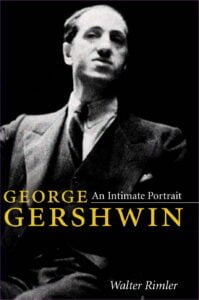
Browse in the Library:
Or browse in the categories menus & download the Library Catalog PDF:
Gershwin: Complete Songbook for Piano
Tracklist:
0:00:00 Do It Again 0:01:35 Fascinating Rhythm 0:02:24 Do Do Do 0:03:26 My One and Only 0:04:09 Clap Yo’ Hands 0:04:54 Somebody Loves Me 0:06:03 I’ll Build a Stairway to Paradise 0:06:40 That Certain Feeling 0:08:13 Liza 0:10:39 Strike up the Band 0:11:34 Sweet and Low Down 0:12:28 Nobody But You 0:13:31 ’S Wonderful 0:14:38 Who Cares 0:15:49 Swanee 0:16:33 Oh, Lady Be Good 0:17:46 I Got Rhythm 0:18:57 The Man I Love
Gershwin: Songbook (arranged by Enrico Fagnoni) 0:21:22 Do It Again 0:23:37 Fascinating Rhythm 0:24:30 Do Do Do 0:26:59 My One and Only 0:28:51 Clap Yo’ Hands 0:29:42 Somebody Loves Me 0:32:08 I’ll Build a Stairway to Paradise 0:34:26 That Certain Feeling 0:36:14 Liza 0:39:24 Strike up the Band 0:41:34 Sweet and Low Down 0:44:07 Nobody But You 0:46:03 ’S Wonderful 0:48:09 Who Cares 0:50:04 Swanee 0:51:26 Oh, Lady Be Good 0:55:17 I Got Rhythm 0:56:53 The Man I Love
Grigory Gruzman plays G. Gershwin I got rhythm
George Gershwin’s “I Got Rhythm” (1930) and its famous “Rhythm changes.”
This is one of the most important harmonic frameworks in jazz, second only to the 12-bar blues. It became the basis for hundreds (maybe thousands) of jazz standards and bebop heads (like Anthropology, Oleo, Cotton Tail, Moose the Mooche).
Harmonic Analysis of “I Got Rhythm”
Form
- 32-bar AABA song form (each section = 8 bars).
- Key: usually B♭ major (original Gershwin setting).
The A Section (bars 1–8, 9–16, 17–24)
The A section progression (basic/original form):
| B♭maj7 | G7 | Cmin7 | F7 |
| B♭maj7 | G7 | Cmin7 F7 | B♭maj7 |
Let’s analyze chord by chord:
- B♭maj7 (I) – tonic, home base.
- G7 (VI7) – a secondary dominant pointing to ii (Cmin7). This gives the progression forward momentum.
- Cmin7 (ii7) – diatonic minor chord.
- F7 (V7) – dominant of the key.
- B♭maj7 (I) – resolution to tonic.
This I – VI7 – ii7 – V7 is the classic “circle of fifths” turnaround. In jazz, players often substitute, extend, or embellish these changes.
Bars 5–8 basically repeat the same idea, often adding passing chords or turnarounds (like ii–V back to I).
Jazz substitution (common bebop “A section”):
| B♭maj7 | Bdim7 | Cm7 | F7 |
| Dm7 | G7 | Cm7 F7 | B♭maj7 |
- Bdim7: a passing diminished chord between I and ii (voice-leading color).
- Dm7–G7: ii–V substitute leading into Cm7–F7. This increases harmonic rhythm and adds bebop drive.
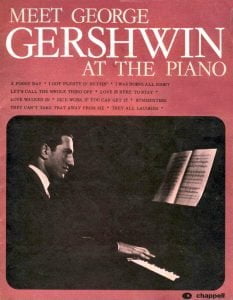
The B Section (bars 25–32)
This is the “bridge” and it moves through a chain of dominants by descending fifths (classic jazz device).
| D7 | D7 | G7 | G7 | C7 | C7 | F7 | F7 |
Analysis:
- D7 (III7) – not diatonic, but a dominant used to start a cycle of fifths.
- G7 (VI7) – dominant that would resolve to ii (Cm7), but instead keeps cycling.
- C7 (II7) – another dominant, moves down a fifth.
- F7 (V7) – sets up the return to B♭ (I) in the final A section.
This bridge gives a strong feeling of tension and release, as each dominant chord demands resolution. The sequence of secondary dominants keeps energy building until the final A.
Structural summary
- A section: tonic-based, with a turnaround I–VI–ii–V progression (and countless bebop substitutions).
- B section: cycle of dominant sevenths moving by descending fifths (III7–VI7–II7–V7).
- Form: AABA, 32 bars total.
Why it’s important in jazz
- Codified as “Rhythm changes.” Jazz musicians took this harmonic skeleton and wrote countless contrafacts (new melodies over the same chords).
- Provides harmonic playground. Players learn to improvise on turnarounds, ii–V–I’s, and dominant cycles — all essential building blocks of bebop and modern jazz.
- Flexible. Gershwin’s original is relatively simple, but jazz musicians embellish it with tritone substitutions, chromatic approach chords, reharmonizations, etc.
Example of substitutions (advanced bebop version of A section):
| B♭maj7 | E7 A7 | Dm7 G7 | Cm7 F7 |
| B♭maj7 | Bdim7 | Cm7 F7 | B♭maj7 A7 |
- E7 A7: a chain of secondary dominants.
- Tritone subs (like replacing G7 with D♭7) often appear.
- By the 1940s–50s, “Rhythm changes” became a harmonic laboratory for Charlie Parker, Dizzy Gillespie, Thelonious Monk, and countless others.
